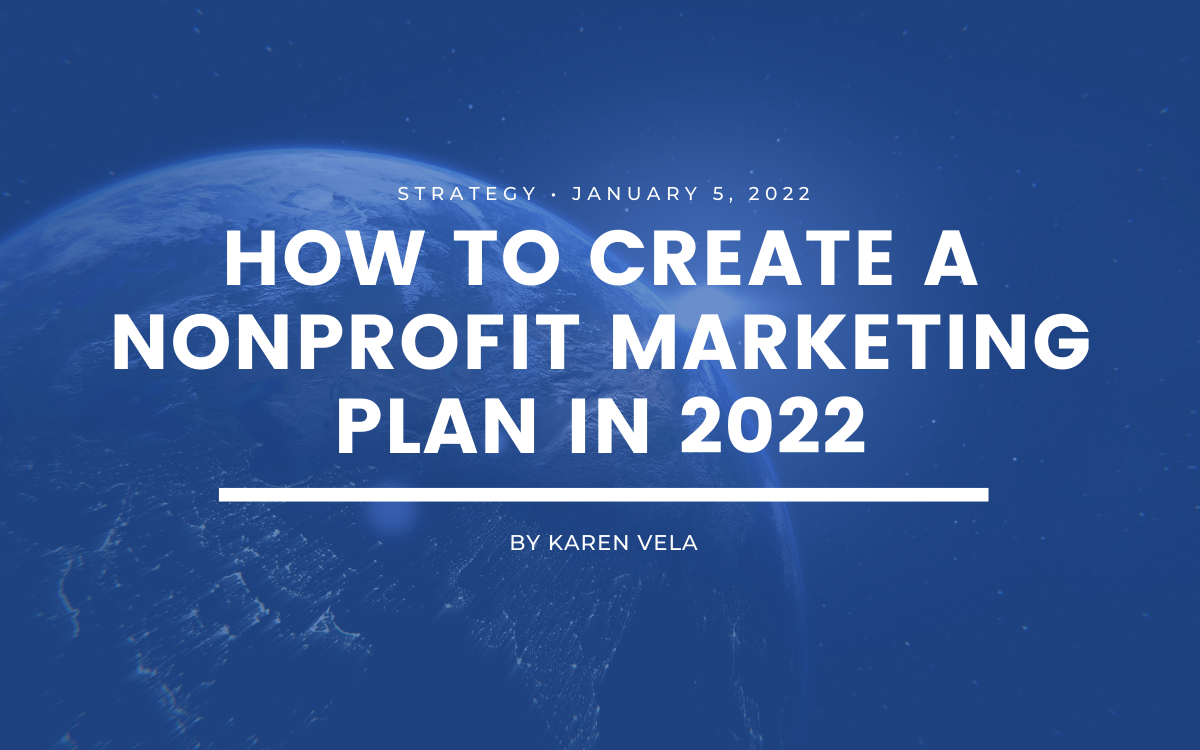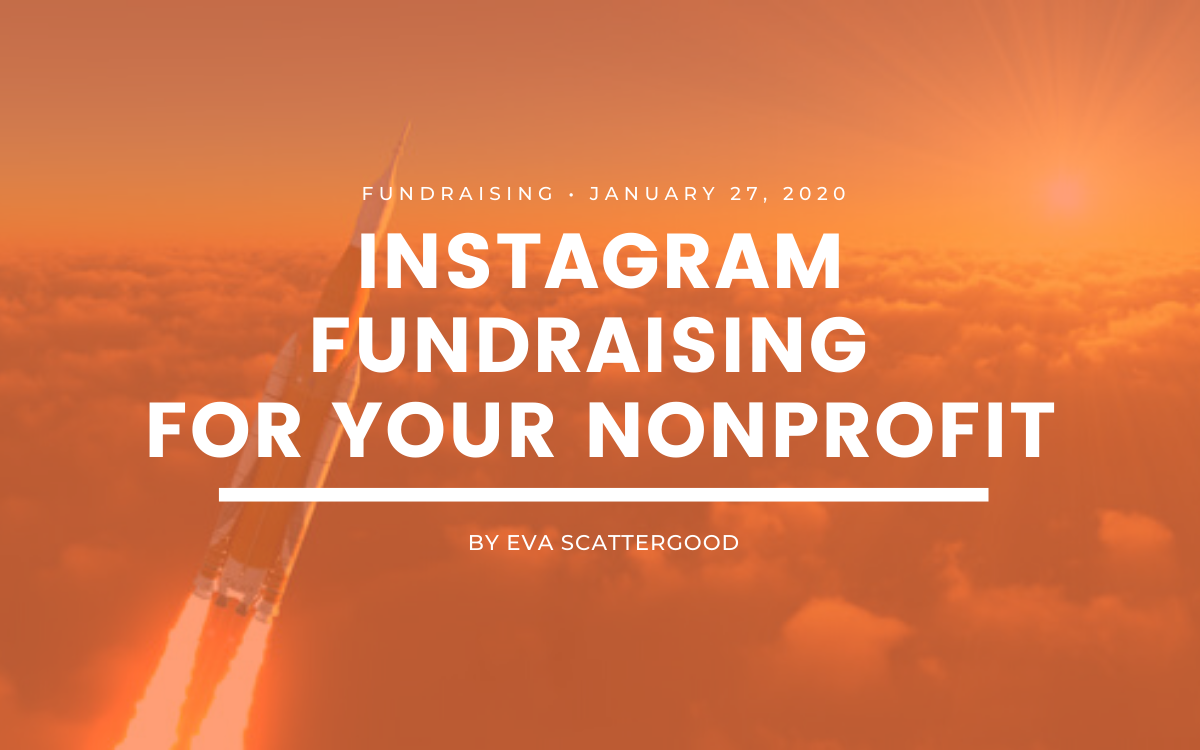How To Create A Nonprofit Marketing Plan
4 min to read ✭ In this post, you'll learn how to begin crafting a nonprofit marketing plan for 2022 to help grow your impact this year.
Creating a strong marketing plan for the year can help set your nonprofit up for a successful 2022. It can be difficult to know where to start, what to include, and how to make sure you’re on the right track so we’ve laid the groundwork for you!
There are a few important questions that need to be answered before you begin launching your campaigns for the year:
- What are your goals?
- Who is your competition?
- How will you measure success?
- What marketing channels should you be using?
- Who is your target market?
- What are your areas of opportunity?
This blog post will help walk you through how to begin crafting your 2022 nonprofit marketing plan step by step or you can download our templated version here for free.
→ Download the FREE 2022 Nonprofit Marketing Plan Template
Marketing plans can look a little different depending on what industry you’re in, or whether you offer any products/services. Let’s dive into what your marketing plan should contain as a nonprofit.
1. Organization Summary
This might sound self-explanatory, however, it’s a great place to start. The organization summary section of your plan should contain your organization’s name, mission statement, where it’s located / where it provides service, and any other relevant information.
2. Organization Initiatives
This is where you will describe what your marketing department is doing to help your organization meet overarching goals. You will want each initiative to include how it will be measured. If your organization has a goal to implement a recurring giving program this year, what exactly is the marketing department going to do to help achieve this goal? After you’ve described these initiatives you should have a clear list of the projects that the marketing department will be responsible for as well as how you are tracking or measuring them.
For example, if your organization has a goal of increasing donor retention, your marketing department’s initiative might be to grow and sustain your email list. This is one of the ways you will strive towards increasing the overarching goal of increasing your donor retention.
In this case, you would describe what you will be doing to grow and sustain your email list and how you will measure it. Continue listing out each initiative that the marketing team will need to do in order to hit your overall organizational goals.
Need ideas about strategies that will help you reach your goals? Check out the Top Fundraising Trends For Nonprofits In 2022.
3. SWOT Analysis
Conduct a SWOT analysis of your brand to help identify your Strengths, Weaknesses, Opportunities, and Threats. This will help your team continue doing what you do best, take advantage of potential opportunities, defend against challenges, and make improvements. We like to use a handy-dandy table chart to map it out, which you can find in the free downloadable template version of this post.
Strengths
Your strengths should include what is working for your organization, what you are good at, what your donors or community like about you, and anything else you may see as a strength of your brand.
Weaknesses
This section should include what needs improvement, strengthening, or fixing. Talk to your team for collaboration on this one, because there is always room for improvement! You can also consider any negative feedback you’ve received from a donor or community member.
Opportunities
Opportunities should not be confused with areas of improvement. This is where you can list things that your nonprofit doesn’t currently do but could start doing, what your donors might soon expect from you, and/or what you can do to stand out and compete.
Threats
Threats are anything that could take away business or hinder your growth. It’s good to think about what the competition might be doing that may cause challenges for you, or any roadblocks or limitations you might have.
Target Audience
Who are you marketing to? This is where you’ll need to do some market research that will help you outline your ideal donor. The most common ways to segment your audience are demographics, lifestyle, geographics, and behavioral traits. Focus on key characteristics like age, location, pains, triggering events, personal challenges, goals, or career. Who are the people that would feel inclined to donate to your organization?
Here are a couple of ways to help define your target audience:
- Analyze your current donor base and look for any similarities in demographics.
- Collect data from focus groups or your community.
- Research the groups with the largest need for help.
Example: A coastal preservation/restoration organization
We are targeting those who reside on the west coast of the United States, predominantly in California, and are between the ages of 21-35. These individuals may have experienced damage or pollution of the waterways in their neighborhoods. They are both male and female, college-educated, and live an active/outdoors lifestyle.
Donor Personas
A donor (buyer) persona is an exemplary or fictional description of your ideal donor based on the characteristics you defined in your target market research. Try to come up with at least 2 different personas for this section of your marketing plan. Let’s continue with the same example from above.
Persona 1: Ryan, a young active male.
Lifestyle: Ryan works remotely from his condo 15 minutes from the beach in San Diego. He gets up early to go surfing every morning before work, is single, owns a dog, and is financially stable.
Personal Background: Ryan is 27 years old, grew up in San Diego, and loves the beach.
Their Challenges/Pain Points: The coastline he loves to surf is often polluted, or off-limits due to oil spills. He wants to keep surfing every day but it is becoming dangerous.
Business Background: Has a degree in marketing and works for a tech company. He does surf photography as a side hustle.
Where They Go For Information: Ryan consistently uses social media on a daily basis but is mostly on Instagram. He mostly uses his phone to do information searches.
Creating these donor personas can help you identify how you can reach these people and display areas of opportunity. Looking at our persona of Ryan shows us that we might want to target people that follow surfing brands on Instagram with our social media advertisements. We might also want to make sure our donation landing page is 100% mobile-friendly, or maybe we want to campaign at local surf competitions, etc.
Competitive Analysis
Now that we know our target market and donor personas, who do we expect to compete with? List each organization’s name followed by what they do, and what they might do better than your organization from a marketing perspective. It is always smart to know who your competitors are and constantly keep an eye on what marketing tactics they might be using. It can not only give you ideas for what you can be doing too, but it can also help you avoid any crossover with the timing of events or major campaigns.
Don’t know where to start? Here’s more about how you can conduct competitive analysis for your nonprofit.
SMART Goals
Now that you have done some research and analysis, it’s time to create goals for your department to strive for. SMART is an acronym for specific, measurable, attainable, relevant, and time-bound. You will want to use these guidelines for every goal you create. Here’s what we mean by SMART:
Specific – What specifically are we trying to achieve? Why is this goal important? Who/what is involved?
Measurable – How will we measure success? What milestones need to be set and met?
Attainable – What steps do we need to take to attain this goal? Do we have the tools/systems in place to achieve this goal? If so, what will we use?
Relevant – Is this relevant for our long-term objectives? Is this the right time?
Time-bound – What is the time frame for this goal?
Download the free template for an easy-to-use SMART goal-setting chart!
Marketing Channels
What channels will you be using to generate awareness? How will you be tracking the success of these channels? Will you have a different approach for each channel? Start by describing the purpose of the channel, and then the metric you will be using to measure success. Any means in which you promote your brand is considered a marketing channel like email, social media, your blog, Youtube, social media advertising, search advertising, etc. (Pro tip: use the $10,000/mo Google Ad Grant for search advertising.)
For example, you could list Instagram as a channel with the purpose of generating brand awareness. The metric to track this channel’s success at raising brand awareness could be the average number of impressions per month. Be sure to list every single channel you are using, or plan to start using in this section.
Pro Tip: Don’t forget to actively compile a report on the metrics that you have set for your channels and your goals. You should be monitoring and reviewing these metrics on a monthly basis at a minimum to help you make data-driven decisions and adjustments. You wouldn’t throw something at a wall and not check if it sticks, right?!





